For the 2025 school year, there are 9 public preschools serving 1,768 students in Randolph County Schools School District. This district's average pre testing ranking is 5/10, which is in the bottom 50% of public pre schools in West Virginia.
Public Preschools in Randolph County Schools School District have an average math proficiency score of 34% (versus the West Virginia public pre school average of 40%), and reading proficiency score of 36% (versus the 41% statewide average).
Minority enrollment is 5% of the student body (majority Black), which is less than the West Virginia public preschool average of 11% (majority Black).
Overview
This School District
This State (WV)
# Schools
14 Schools
379 Schools
# Students
3,534 Students
107,090 Students
# Teachers
270 Teachers
8,250 Teachers
Student : Teacher Ratio
14:1
14:1
District Rank
Randolph County Schools School District, which is ranked within the bottom 50% of all 57 school districts in West Virginia (based off of combined math and reading proficiency testing data) for the 2021-2022 school year.
The school district's graduation rate of 93% has increased from 90% over five school years.
Overall District Rank
#43 out of 57 school districts
(Bottom 50%)
(Bottom 50%)
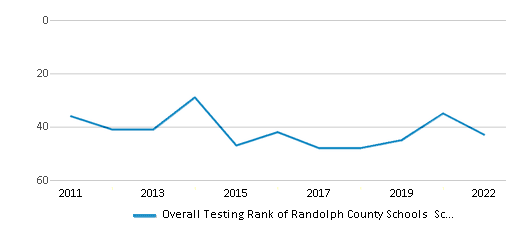
Math Test Scores (% Proficient)
25%
32%
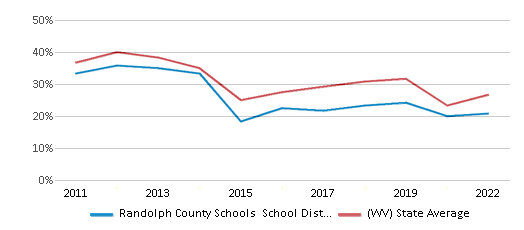
Reading/Language Arts Test Scores (% Proficient)
35%
41%

Science Test Scores (% Proficient)
22%
28%
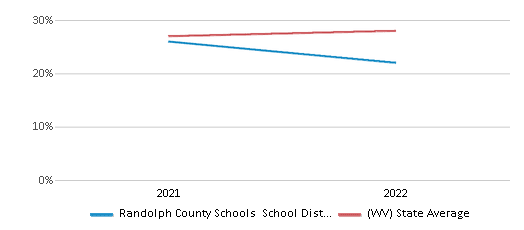
Graduation Rate
93%
91%
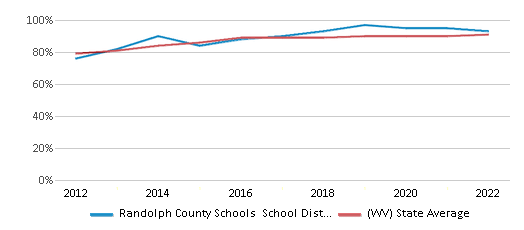
Students by Ethnicity:
Diversity Score
0.11
0.21
# American Indian Students
2 Students
90 Students
% American Indian Students
n/a
n/a
# Asian Students
6 Students
682 Students
% Asian Students
n/a
1%
# Hispanic Students
40 Students
2,073 Students
% Hispanic Students
1%
2%
# Black Students
72 Students
4,091 Students
% Black Students
2%
4%
# White Students
3,338 Students
95,121 Students
% White Students
95%
89%
# Hawaiian Students
2 Students
68 Students
% Hawaiian Students
n/a
n/a
# Two or more races Students
74 Students
4,965 Students
% of Two or more races Students
2%
4%
Students by Grade:
# Students in PK Grade:
180
14,820
# Students in K Grade:
233
16,101
# Students in 1st Grade:
266
16,065
# Students in 2nd Grade:
238
16,527
# Students in 3rd Grade:
257
13,702
# Students in 4th Grade:
237
12,615
# Students in 5th Grade:
280
12,001
# Students in 6th Grade:
281
2,029
# Students in 7th Grade:
279
1,508
# Students in 8th Grade:
245
1,518
# Students in 9th Grade:
270
74
# Students in 10th Grade:
268
53
# Students in 11th Grade:
272
35
# Students in 12th Grade:
228
42
# Ungraded Students:
-
-
District Revenue and Spending
The revenue/student of $13,949 in this school district is less than the state median of $15,963. The school district revenue/student has grown by 7% over four school years.
The school district's spending/student of $13,319 is less than the state median of $15,138. The school district spending/student has grown by 7% over four school years.
Total Revenue
$49 MM
$3,933 MM
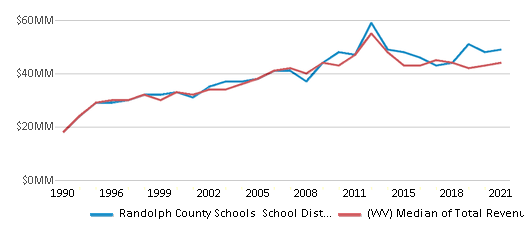
Spending
$47 MM
$3,730 MM
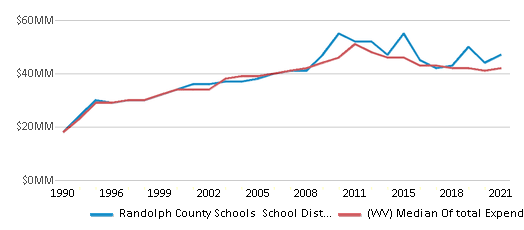
Revenue / Student
$13,949
$15,963
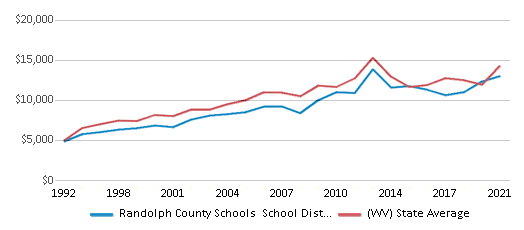
Spending / Student
$13,319
$15,138
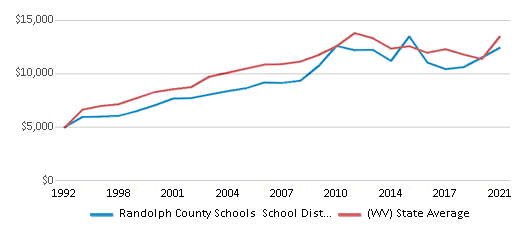
Best Randolph County Schools School District Public Preschools (2025)
School
(Math and Reading Proficiency)
(Math and Reading Proficiency)
Location
Grades
Students
Rank: #11.
Midland Elementary School
(Math: 65-69% | Reading: 60-64%)
Rank:
Rank:
10/
Top 5%10
150 Kennedy Dr
Elkins, WV 26241
(304) 636-9186
Elkins, WV 26241
(304) 636-9186
Grades: PK-5
| 168 students
Rank: #22.
North Elementary School
(Math: 30-34% | Reading: 45-49%)
Rank:
Rank:
7/
Top 50%10
410 Kennedy St
Elkins, WV 26241
(304) 636-9189
Elkins, WV 26241
(304) 636-9189
Grades: PK-5
| 189 students
Rank: #33.
Jennings Randolph Elementary School
(Math: 35-39% | Reading: 35-39%)
Rank:
Rank:
6/
Top 50%10
101 Scott Ford Rd
Elkins, WV 26241
(304) 636-9181
Elkins, WV 26241
(304) 636-9181
Grades: PK-5
| 229 students
Rank: #44.
Elkins Third Ward Elementary School
(Math: 40-44% | Reading: 30-34%)
Rank:
Rank:
5/
Bottom 50%10
111 Nathan St
Elkins, WV 26241
(304) 636-9183
Elkins, WV 26241
(304) 636-9183
Grades: PK-5
| 299 students
Rank: #55.
Pickens Elementary/high School
(Math: ≤20% | Reading: 40-59%)
Rank:
Rank:
5/
Bottom 50%10
One Panther Place
Pickens, WV 26230
(304) 924-5525
Pickens, WV 26230
(304) 924-5525
Grades: PK-12
| 29 students
Rank: #66.
George Ward Elementary School
(Math: 30-34% | Reading: 25-29%)
Rank:
Rank:
3/
Bottom 50%10
10007 Seneca Trail
Mill Creek, WV 26280
(304) 335-4975
Mill Creek, WV 26280
(304) 335-4975
Grades: PK-5
| 325 students
Rank: #77.
Coalton Elementary School
(Math: 20-29% | Reading: 30-39%)
Rank:
Rank:
3/
Bottom 50%10
278 Broadway Ave
Coalton, WV 26257
(304) 636-9164
Coalton, WV 26257
(304) 636-9164
Grades: PK-5
| 161 students
Rank: #88.
Harman Elementary/high School
(Math: 10-14% | Reading: 30-34%)
Rank:
Rank:
1/
Bottom 50%10
22476 Allegheny Highway
Harman, WV 26270
(304) 227-4114
Harman, WV 26270
(304) 227-4114
Grades: PK-12
| 125 students
Rank: #99.
Beverly Elementary School
(Math: 15-19% | Reading: 20-24%)
Rank:
Rank:
1/
Bottom 50%10
505 Main St
Beverly, WV 26253
(304) 636-9162
Beverly, WV 26253
(304) 636-9162
Grades: PK-5
| 243 students
Recent Articles

Year-Round Or Traditional Schedule?
Which is more appropriate for your child? A year-round attendance schedule or traditional schedule? We look at the pros and cons.

Why You Should Encourage Your Child to Join a Sports Team
Participating in team sports has a great many benefits for children, there is no doubt. In this article you will learn what those benefits are.

White Students are Now the Minority in U.S. Public Schools
Increasing birth rates among immigrant families from Asia and Central and South America, combined with lower birth rates among white families, means that for the first time in history, public school students in the United States are majority-minority. This shift in demographics poses difficulties for schools as they work to accommodate children of varying language abilities and socio-economic backgrounds.





